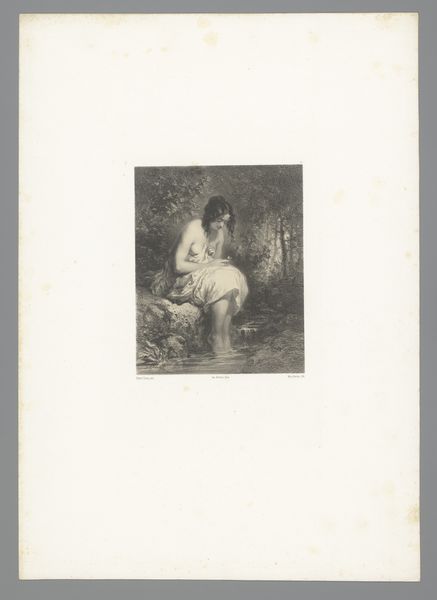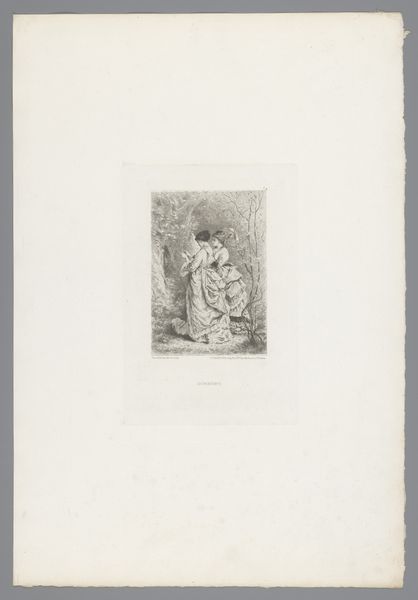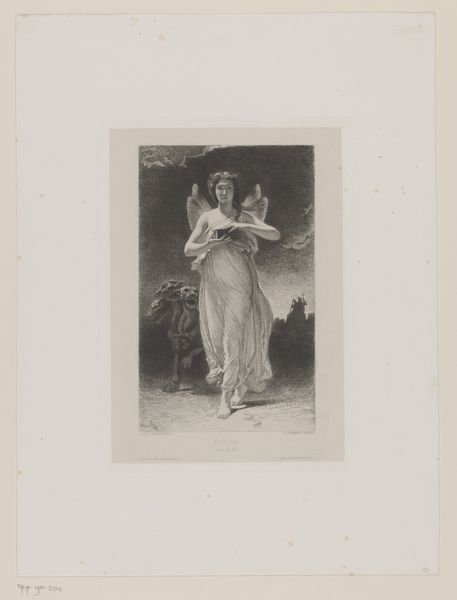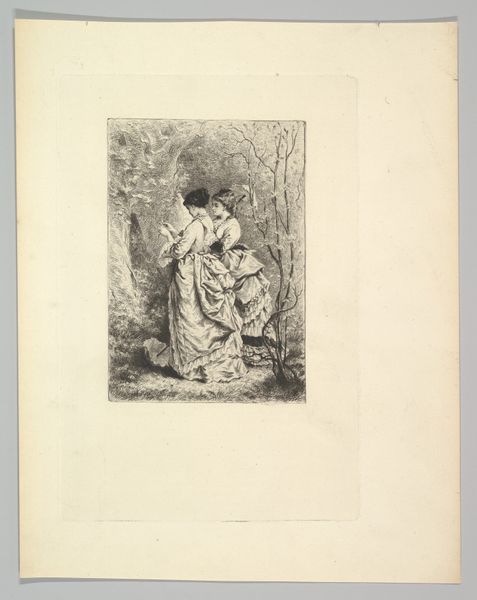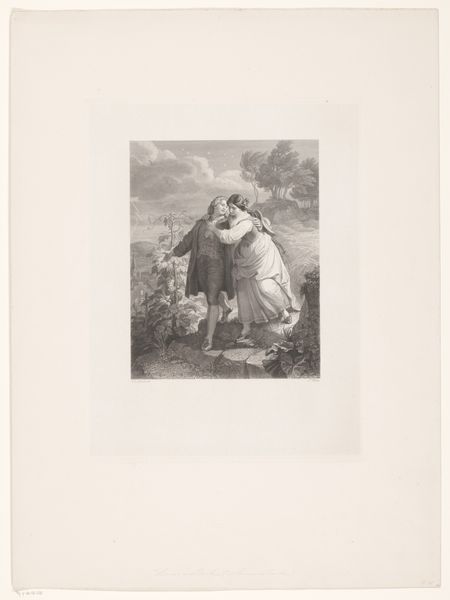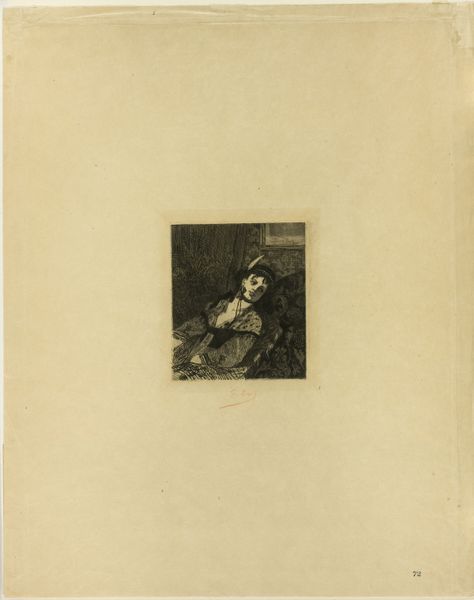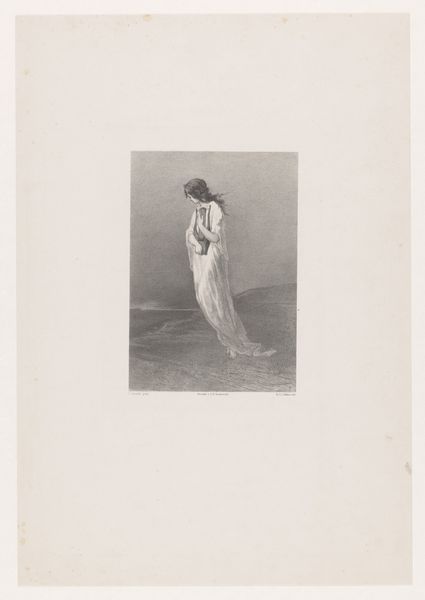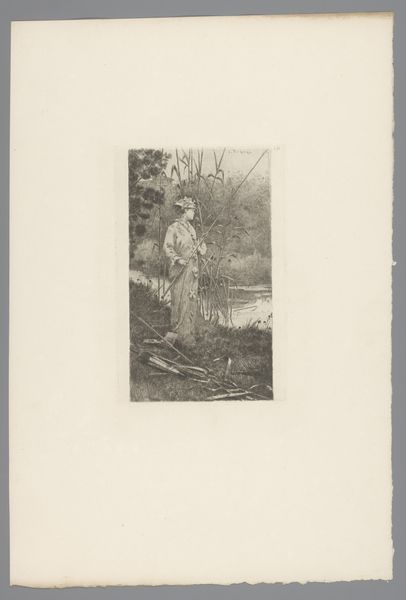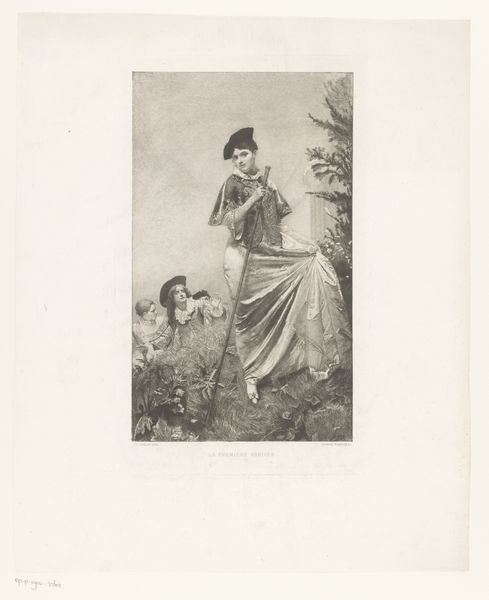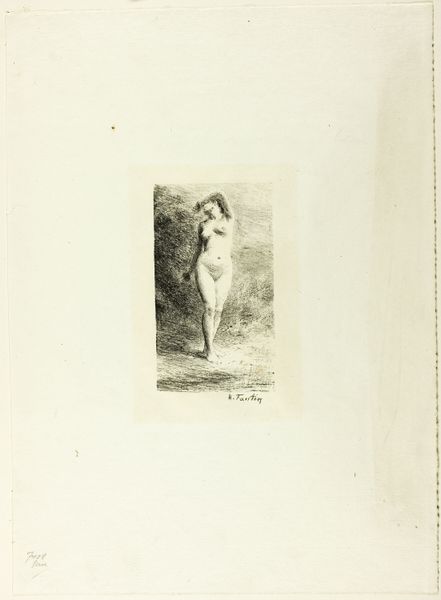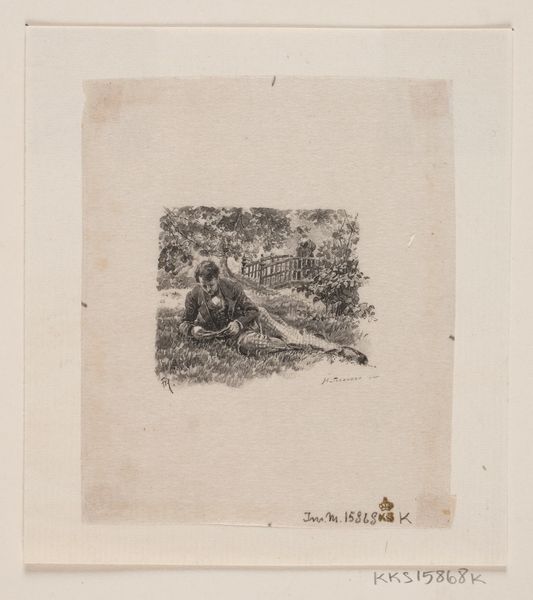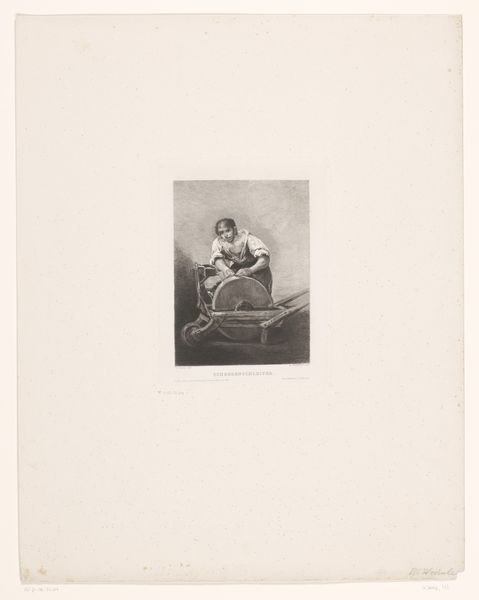
Crying Woman: Study of a Seated Woman in Right Profile 1899
0:00
0:00
drawing, lithograph, print, etching
#
pencil drawn
#
drawing
#
lithograph
# print
#
etching
#
pencil sketch
#
figuration
#
pencil drawing
#
symbolism
#
nude
Dimensions: 111 × 76 mm (image); 257 × 202 mm (sheet)
Copyright: Public Domain
Curator: Let’s turn our attention to Henri Fantin-Latour’s print, "Crying Woman: Study of a Seated Woman in Right Profile," created around 1899. Editor: The immediate impact is somber. The compressed charcoal marks convey a real sense of anguish; her bowed head and huddled pose practically vibrate with emotion. Curator: Fantin-Latour was a master of capturing emotional intensity within domestic settings. It's worth noting he moved within Symbolist circles, imbuing even his portraiture with this kind of layered meaning. What this piece tells us, within its Symbolist framework, about female interiority and the construction of feminine sadness as a spectacle, I find interesting. Editor: The etching and lithography gives a gritty, almost crumbling texture. This textured quality to the materials definitely mirrors the subject’s distress. I wonder about his choice of printmaking versus, say, painting. It feels less precious, somehow, more immediate. Curator: It’s true. The reproductive nature of printmaking made the image accessible to a wider audience. And consider its place within the fin-de-siècle obsession with melancholy—it circulated readily in intellectual circles interested in ideas about feeling and affect. The scale contributes too; a private moment made public. Editor: Exactly. Thinking about the labor involved—the deliberate act of making multiples—shifts how we read the expression of personal grief. Each print carries that encoded history. Is it art for the sake of mass production, or is the layered grief more powerful with a wider distribution? Curator: And we must acknowledge how these portrayals of women fed into—and perpetuated—certain social expectations. But as the curator, I want to ask, can't it also invite a sympathetic consideration for experiences of female pain which is a difficult but significant role of institutions? Editor: Absolutely. And maybe the materials themselves—the ink, the paper, the very press used to create these images—become stand-ins for tears, sweat, for the physicality of expressing such profound emotion. Curator: The intersection of artistic method, public role, and social message is fascinating. Fantin-Latour prompts important questions on women in public institutions and art itself. Editor: Indeed. "Crying Woman" transcends the purely representational—it’s a study in emotion, but also a fascinating artifact born from social expectation.
Comments
No comments
Be the first to comment and join the conversation on the ultimate creative platform.
